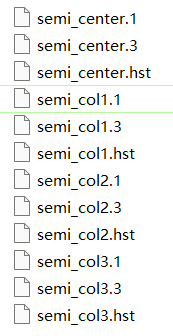Dear all, I looked around but I was not able to find any subdyn model for the IEA15MW Umaine semisubmersible, which could be used in OpenFAST v.3.5.4.
I know that, for the original platform, there is no SubDyn model, as also checked here, but maybe someone has developed a subdyn model of it?
Hi @Maurizio.Collu,
I’m not aware of a flexible VolturnUS semisubmersible in SubDyn. I understand that the main limitation is that the structural properties (e.g., thickness) are not stated anywhere (at least to my knowledge).
We have build flexible models in SubDyn for the VolturnUS design as part of the FOCAL project. These models are based on the as-built dimensions (i.e., similar to the VolturnUS, but not exactly the same). See for example: https://doi.org/10.1115/OMAE2024-128114. Also, at the time of this project, we didn’t have the capability to include rectangular members in SubDyn. So, equivalent cylindrical members were used instead.
As part of the OC7 Phase II project (starting in 2 weeks), we have also build up a SubDyn model with rectangular pontoons (see for reference: Implementation of rectangular members in HD and SD by luwang00 · Pull Request #2646 · OpenFAST/openfast · GitHub). But this model also has load cells and other elements that are specific to the FOCAL project.
If the structural properties of the VolturnUS design are stated somewhere, building the SubDyn model would be straight-forward. However, keep in mind that to capture the structural loading properly within the substructure, you will need a discretized hydrodynamic model. This is inherent in a strip-theory approach. But if you use a potential flow method, you will need to include several potential flow bodies to transfer that discretized loading at the structural side.
I hope that helps!
Many thanks, @Roger.Bergua , for the quick and exhaustive answer.
I suppose you meant you are not aware of any UMaine 15MW semisub flexible model in SubDyn. In which case it is unlikely there is one around.
Many thanks for the OMAE paper and the pull request #2646. QUite nice to know that now rectangular members can be modelled.
Very interesting the fact that, if a potential flow approach is adopted, a discretized hydrodynamic model needs to be used: makes completely sense - thanks for the heads up. Do you know if there is an example of this? I suppose the quickest way, a this point in time, is to have a MacCamy-Fuchs approach.
You can find examples of platforms modeled by means of several potential flow bodies in the r-test repository: r-test/modules/hydrodyn at main · OpenFAST/r-test · GitHub
See the examples: hd_NBodyMod1, hd_NBodyMod2, and hd_NBodyMod3.
You can find an explanation about NBodyMod in the section 3.2 Multiple Potential-Flow Bodies of this paper: Implementation of Substructure Flexibility and Member-Level Load Capabilities for Floating Offshore Wind Turbines in OpenFAST.
Finally, you can find an example of publicly available project that we have done using several potential flow bodies to get the internal loading within the substructure: https://www.nrel.gov/docs/fy25osti/91769.pdf. Again, as part of the OC7 Phase II project, we will adopt a similar approach.
I hope that helps!
Many thanks, @Roger.Bergua.
@Xiaoming.Ran, this can be interesting for your literature review and future work in the project Ocean REFuel
Continuing the discussion from IEA15 UMaine Semisubmersible subdyn model:
Dear all, I want to know how to model multiple members in WAMIT. I guess we need to consider the coupling effect between the central column and the bias column, so there may be differences in the WAMIT parameter configuration. Could anyone provide the WAMIT input files(like *.wam, *.gdf, and *.frc) for the examples: hd_NBodyMod1, hd_NBodyMod2, and hd_NBodyMod3, to generate files (like semi_center.1, semi_col1.1 and so on in picture attached)?
Thank you very much for your time and support.
Hi @Jiaxi.Yang ,
Please see this pull request ( Add example WAMIT input files for the hd_NBodyMod* r-tests by luwang00 · Pull Request #168 · OpenFAST/r-test · GitHub ) for the example WAMIT input files. Note that these are not the exact original input files that generated the WAMIT outputs on r-test, but they should be equivalent.
Best,
Thanks a lot, this will be very helpful.

